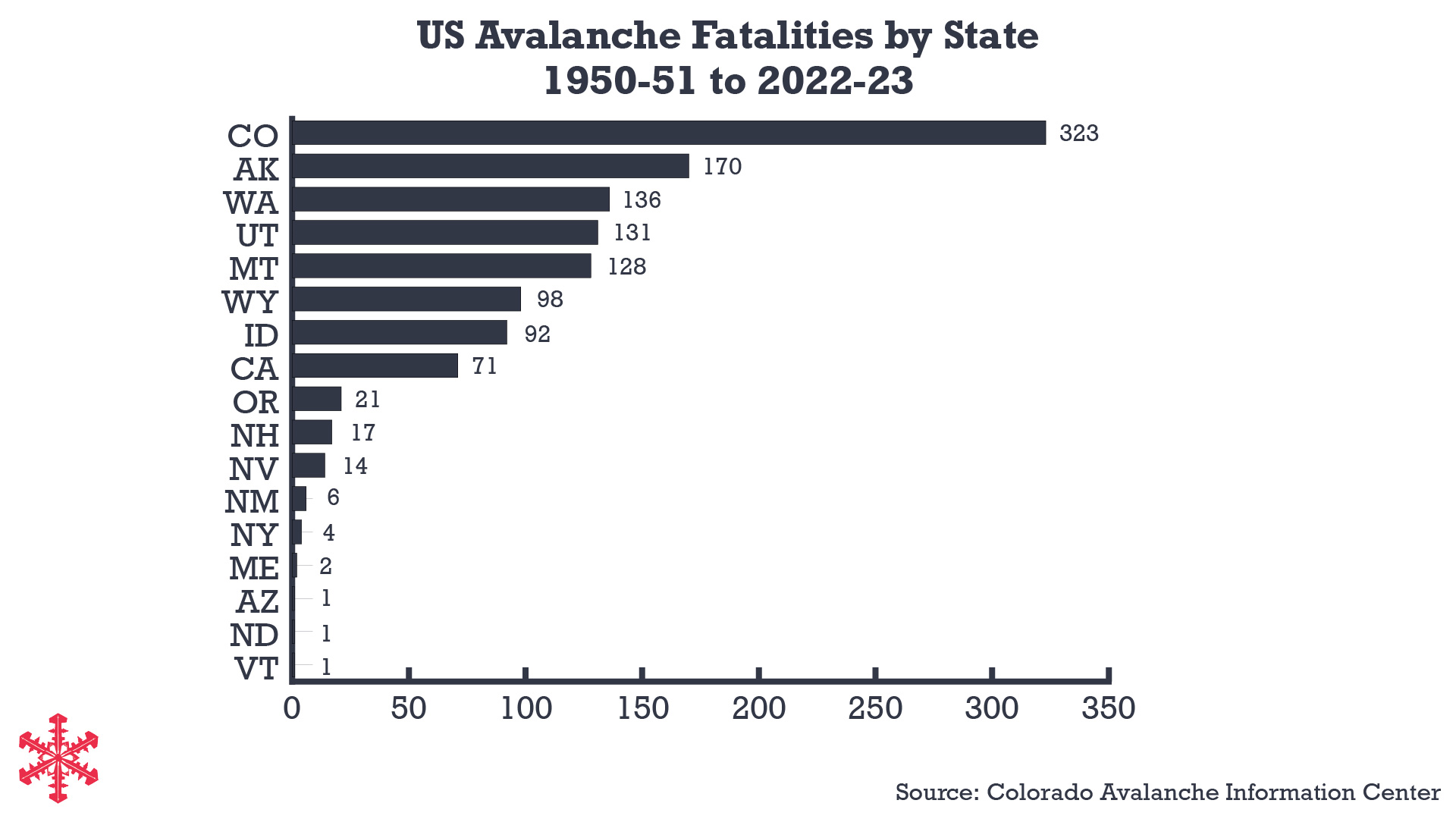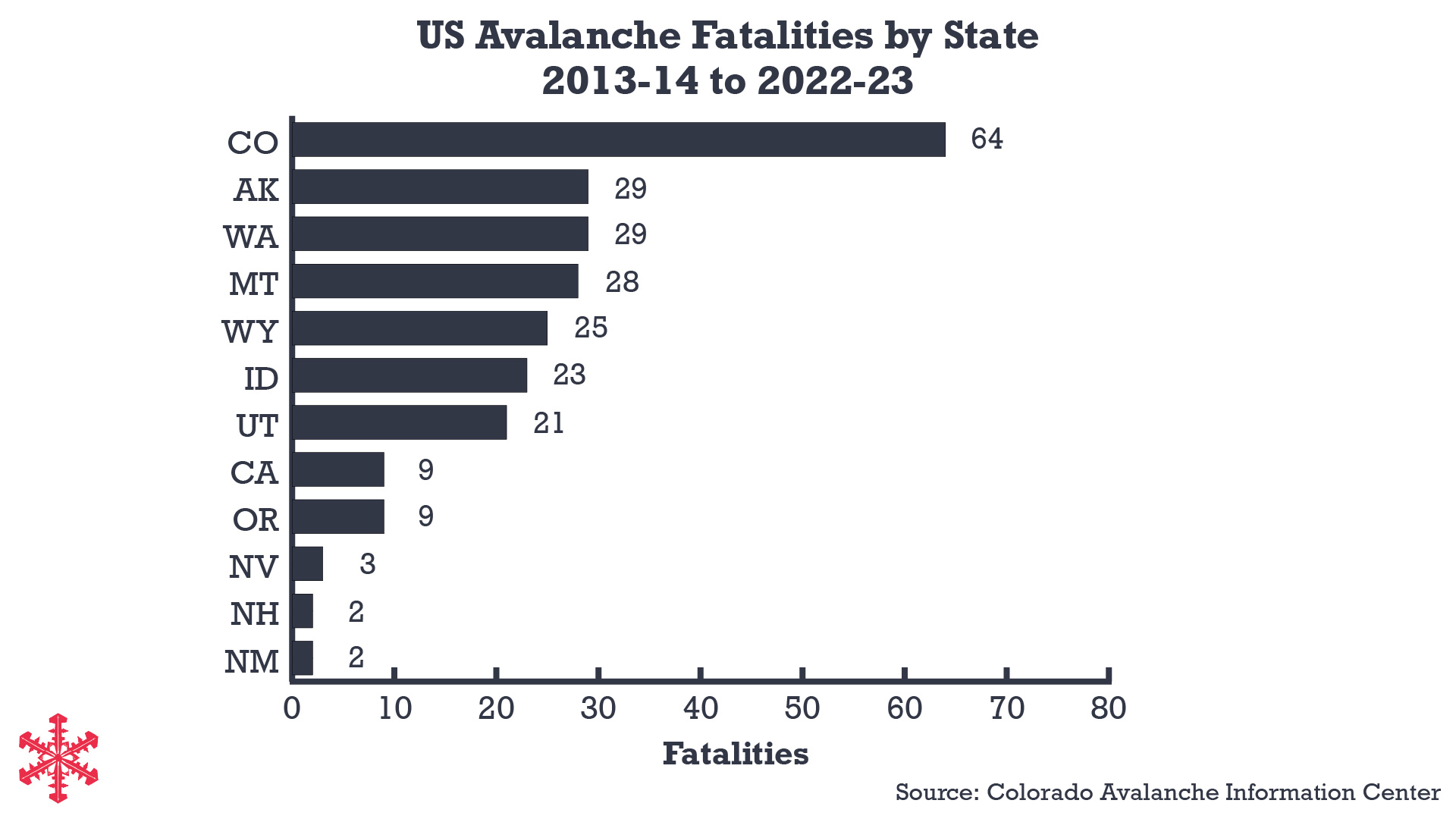
Avalanches can occur in mountains as snow accumulates on steep slopes. If the snowpack becomes unstable, it can suddenly release and rapidly descend downslope. Some avalanches have occurred in the Northeast but do not happen nearly as much compared to the Western U.S. Alaska, Washington, Utah, and Montana are known for being prone to the risk of avalanches. However, Colorado has experienced more avalanches and fatalities than any other state by far.
According to a report from the Colorado Avalanche Information Center (CAIC), Colorado has had the highest avalanche deaths since 1950. However, due to the mitigation and precautions taken by ski patrol, most avalanche deaths do not happen at ski resorts. The majority of avalanches occur in the backcountry. The popularity and higher number of recreationists, including skiers, snowboarders, snowmobilers, and hikers, heading out to Colorado’s backcountry contribute to this.
- Related: Swiss Research Shows 10% Jump in Avalanche Survival and 45% Faster Rescues in Last 40 Years

Another factor contributing to the large number of avalanches in Colorado is the state’s geographical location. In other parts of the country, avalanche danger tends to spike and stabilize quickly following a storm, but in Colorado, weather events can create lingering instability for weeks. These factors lead to Colorado’s high number of avalanches per year.
According to the CAIC, 5,663 avalanches occurred in Colorado between October 1, 2022, and June 30, 2023. Out of those, 122 people were caught in avalanches, and 11 were killed. Last season, 861 avalanches were triggered by humans in Colorado, making avalanche training essential to anyone who may be operating in an area that is prone to avalanches.
